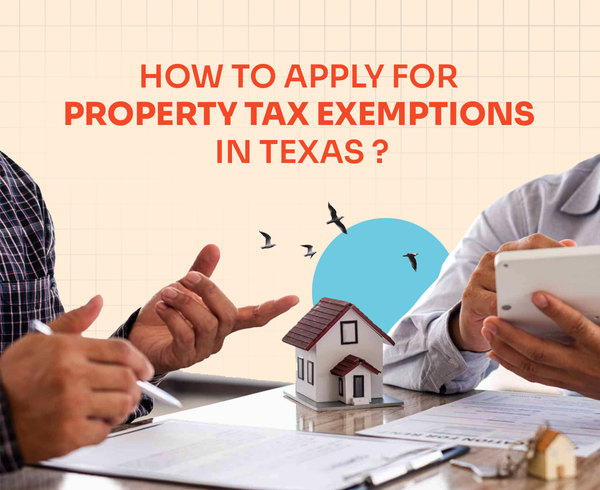Property taxes are ad valorem taxes that are imposed annually on real estate holdings and must be paid by property owners. These taxes can significantly impact a property owner’s finances, so the state of Texas has created various property tax exemptions that provide relief to eligible homeowners and exempt organizations.
To take advantage of property tax exemptions, it’s essential to understand the details of the application process. Let’s Dive deep into the step-by-step approach to applying for property tax exemptions in Texas.
Determine eligibility:
The first step towards accessing these exemptions is identifying the type of exemption that you qualify for. The state of Texas offers exemptions for resident homeowners, senior citizens, disabled individuals, military veterans, farmers, charitable organizations, and properties with energy-efficient upgrades, among others. Review the eligibility criteria for each of these groups and determine which is best for your situation, and then apply for those particular exemptions accordingly.
Gather documents:
Based on which exemption groups you fall under, find the documentation that will be required. Depending on the exemption you’re seeking, you may need to include documents proving your age, disability, military service records, income status, or other corroborating information. Submitting the right documents is half the battle when it comes to filing for a property tax exemption.
Contact the local appraisal district:
In Texas, each county has an appraisal district that is responsible for property tax valuations and exemptions. Reach out to your county's appraisal district to get the forms you need, along with guidance on the entire application process for property tax exemptions.
Form completion:
After receiving the information about your county’s specific regulations and requirements, carefully fill out the forms for property tax exemptions accurately and completely. Attach the requested documentation to support your eligibility for the exemption and ensure there are no errors or missing documents before submitting.
Submit your application:
Be sure to submit your completed forms and evidentiary documents to the county appraisal district before any applicable deadline. It’s crucial to adhere to any timelines so that your application is considered in a timely manner, and that you avoid any late penalties for non-payment of your taxes. Most applications and accompanying documentation can be submitted via email, US mail, or in person at the county appraisal district’s office.
Follow-up without fail:
Don’t forget about your application after submitting it. Maintain regular communication with the appraisal district to confirm their receipt of your application, track its progress, and address any issues promptly. Your commitment to following up will demonstrate your commitment to the process.
Property tax exemptions are invaluable for many Texas citizens who wish to reduce the financial burden of property ownership. We hope this article clearly explained the process of applying for property tax exemptions in Texas. With this information, it is possible to successfully navigate the application process and enjoy the benefits of reduced property taxes.
Even with the exemption benefits, if you believe that your property taxes are based on an incorrect assessment of your property, we encourage you to file a property tax protest and potentially save thousands of additional dollars, like the 500+ Texas homeowners who have already saved with Bezit. To learn more, connect with us here.

